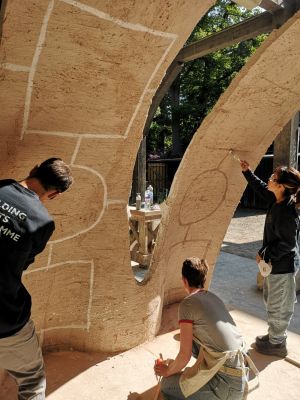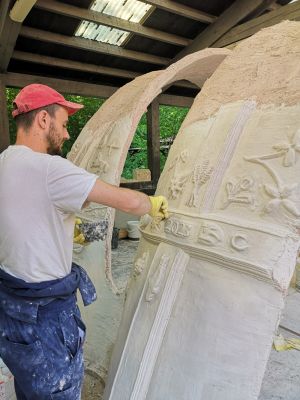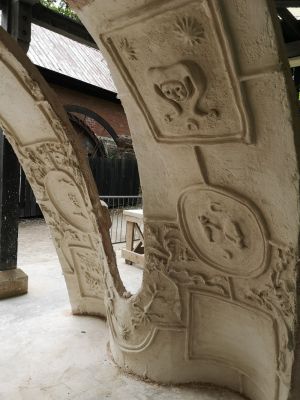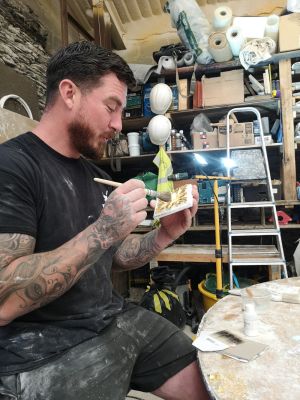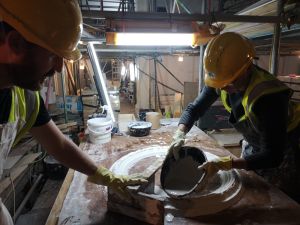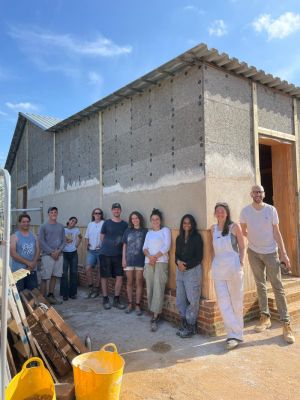Plastering Courses
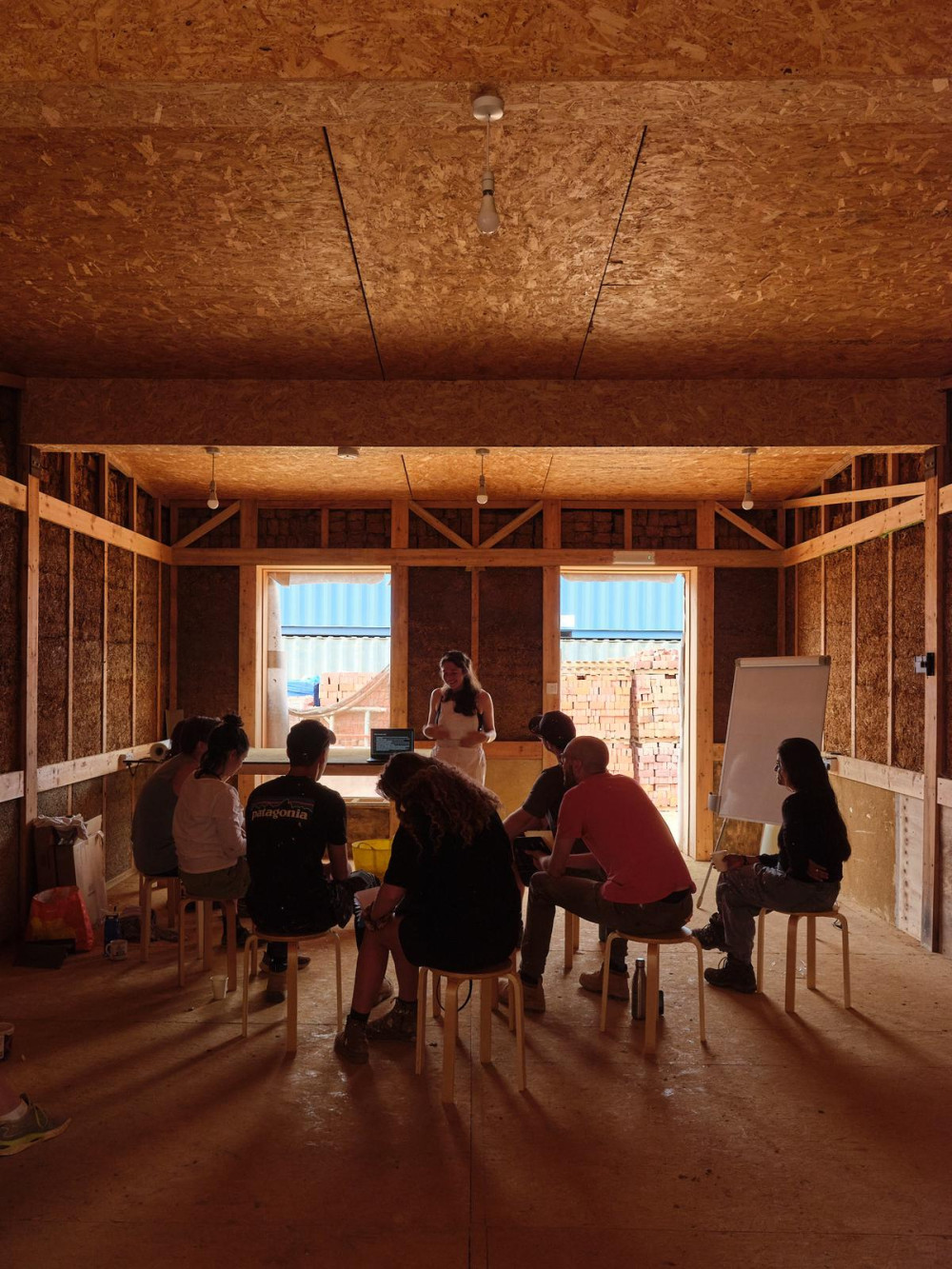
CPD Courses for industry professionals
Lime Rendering and Plastering for homeowners
Lime run cornice and fibrous repairs
Bespoke craft courses for groups
Our courses are arranged on request and take place at our workshop in mid-Wales or a location chosen by the client.
Below is a list of the bespoke courses we have run around the UK. Please get in touch if you would like to attend or lay on a unique hands-on course for yourself, employees or a small group.
Professional Courses
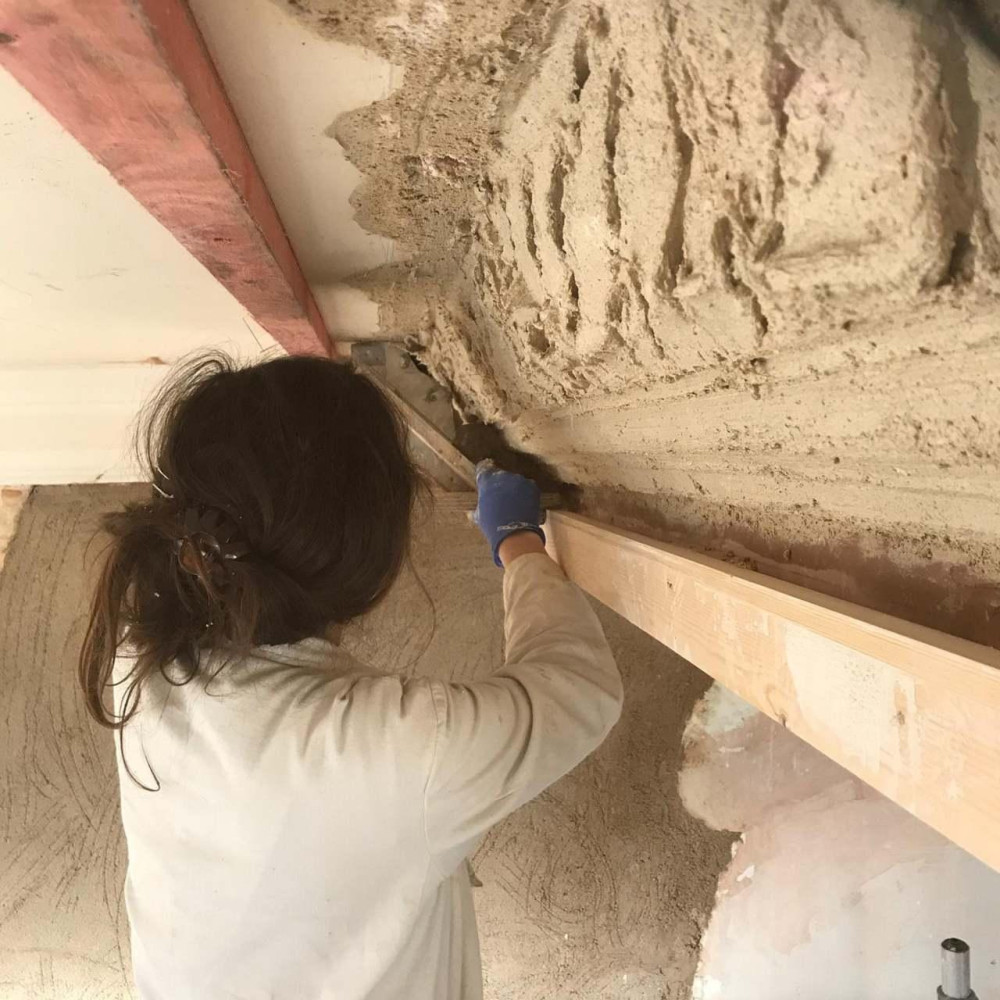
Georgian Cornice Workshop
Do you have a building you’re restoring and want to upskill the team? Are you a plasterer wishing to set yourself apart? Or are you simply wanting to have a fun day with your colleagues outside of the corporate environment?
This is a two-day course covering how to run a Georgian cornice in situ and fibrous plaster. It is aimed at practicing plasterers and industry professionals alike. Students make their own running mould, mount it on a sledge, and run it in lime and gypsum along a mockup wall with internal and external miters. Students then learn to rule in mitres by hand, run a simple ceiling rose in plaster of Paris on a bench, cast enrichment from flexible moulds, and fix them in place. The forms, names, and symbols found on classical cornices will also be introduced.
This course is only offered on request and works well as a one-on-one lesson and a group lesson alike. It can be provided at our workshop in West Wales or at your site.
Recent Bespoke Courses
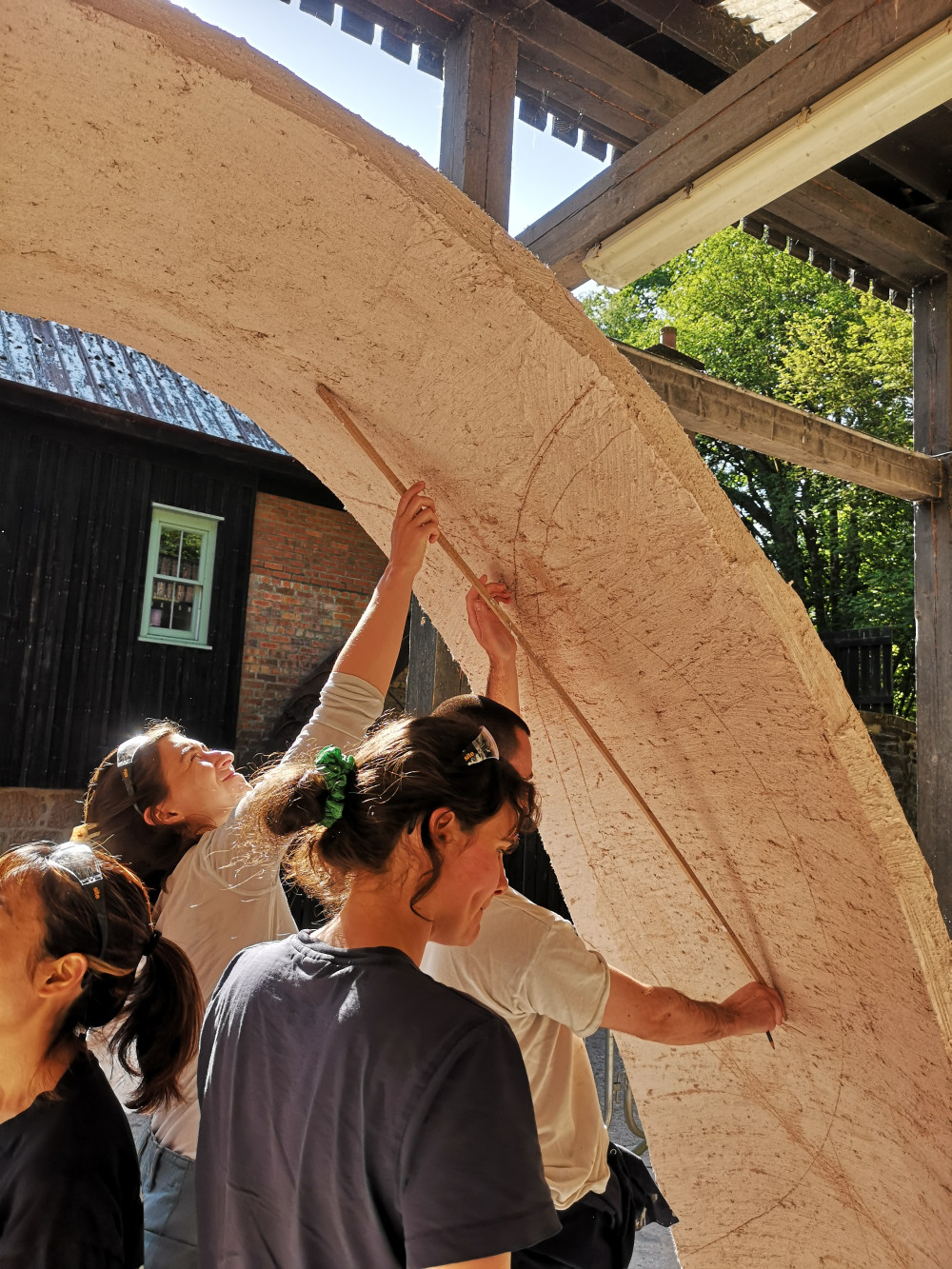
Pargetry Workshops
Four-day, in-situ, decorative lime plaster workshop at Dumfries House, Scotland. The course was arranged for eight students on the Building Arts program with the Queen Elizabeth Scholarship Trust (QEST). Students were introduced to traditional methods of running rib work on a complex vaulted structure. They were then introduced to different historic aesthetics in plasterwork before deciding on a preferred aesthetic and theme for their own structure. Students modelled ornaments in clay for their plaster negative stamps. The stamps and moulds were used to create soft-cast enrichment in hairy lime plaster, which was fast and simple to repeat. Students also modelled in relief their own pargetry designs. One student even made a mould for the enrichment of a double rib.
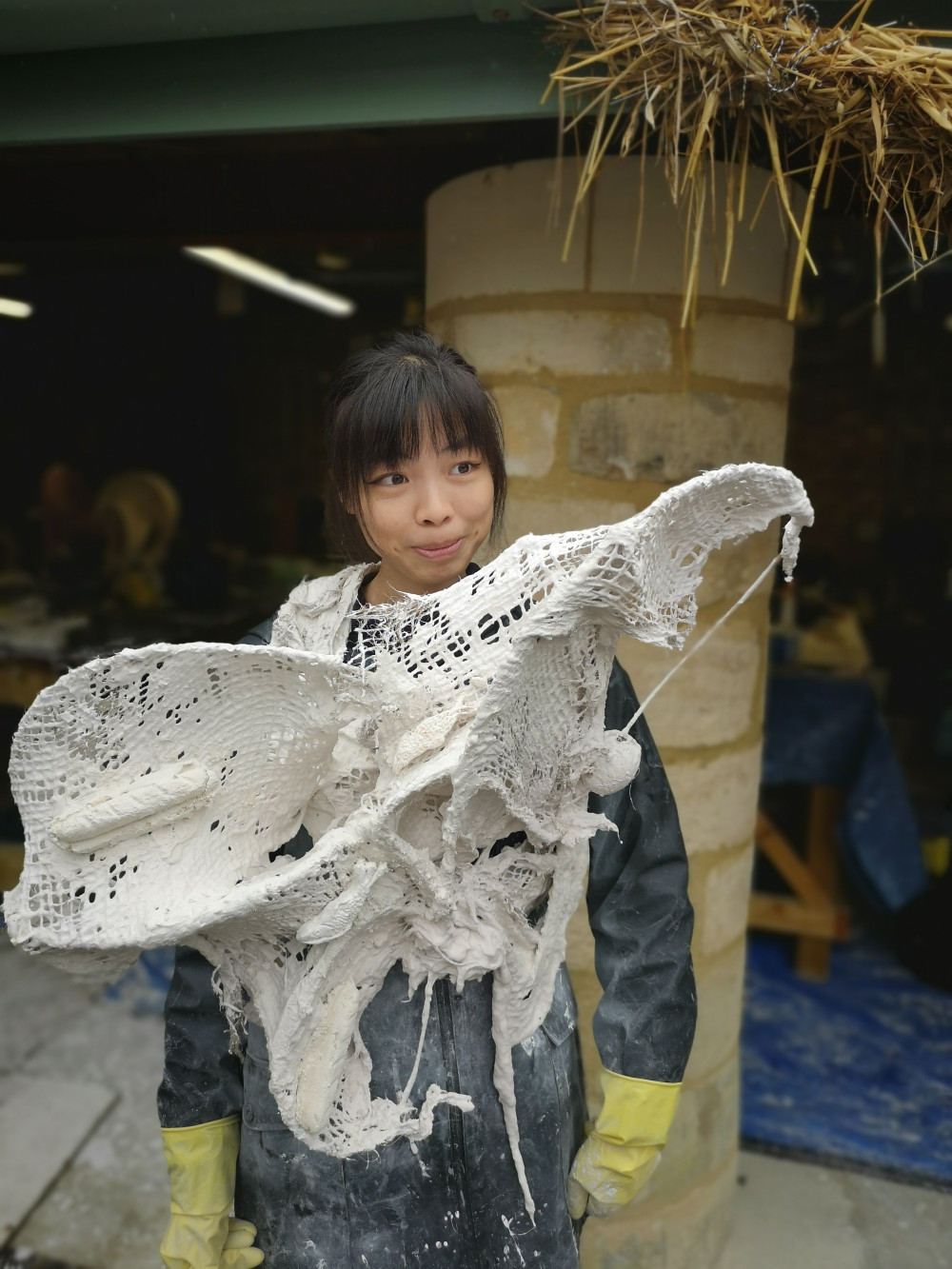
Experimental fibrous plaster play workshop
A three-day creative workshop for students from the German Fashion Council’s training program at Highgrove Estate, Cotswolds. This course focused more on creativity with plaster than technical training. The students were introduced to classical and early English plaster ornaments before carrying out their own clay models of plants in the gardens. From the clay models, they made gelatine moulds, which would once have been commonly used in the fibrous industry. They melted, poured, set, and cast plaster ornamentation from their gelatine moulds and fixed them onto their structures. Students had created wicker structures, which we draped hessian dipped in wet casting plaster over before it set hard. Students also learned to run ceiling roses on a bench, which they incorporated into their final fashion or craft pieces.
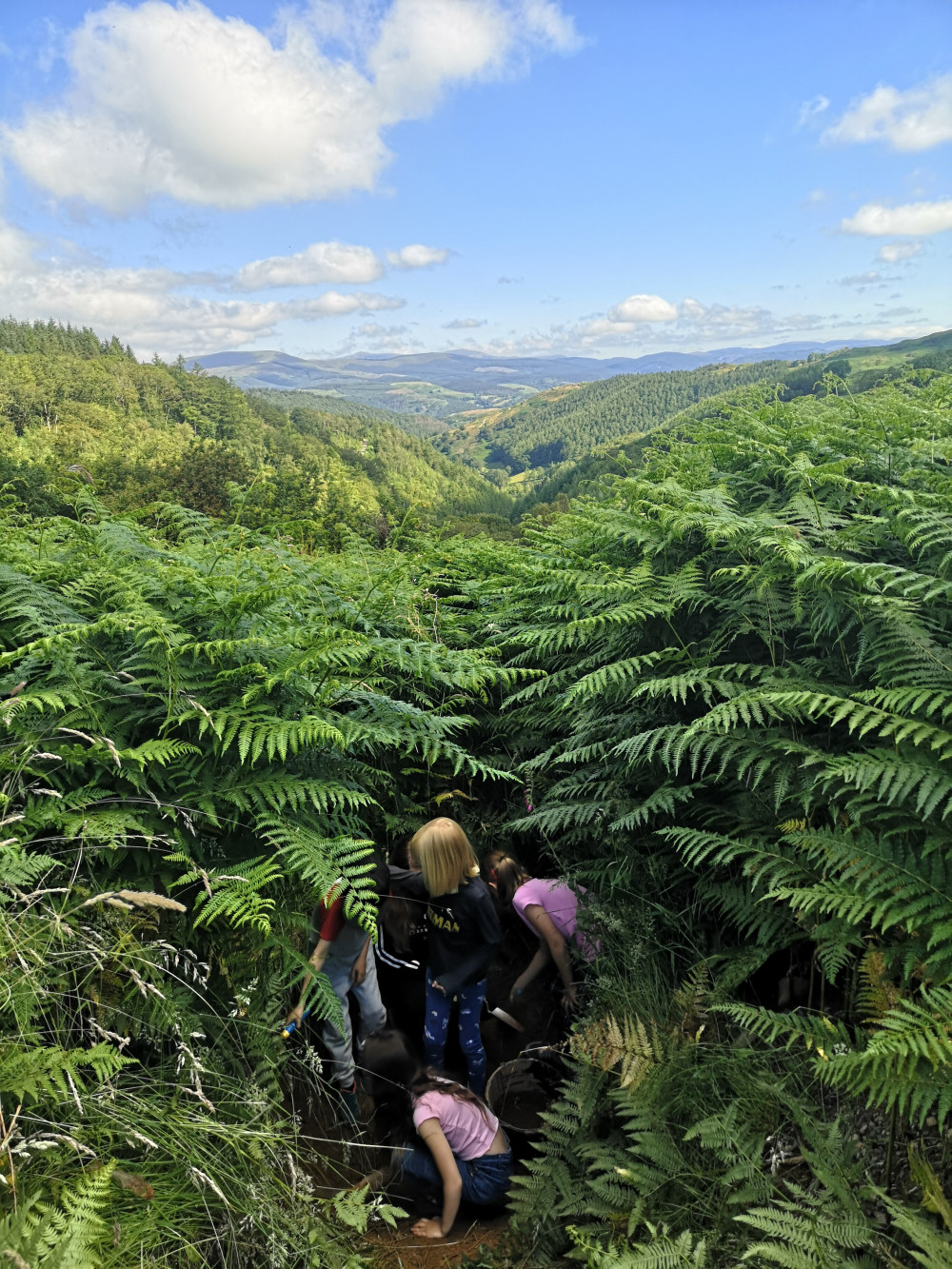
Children's workshops
A three-day clay, plaster, and nature workshop for 20 primary school students with Coetir Anian (the Cambrian Wildwood), Bwlch Corog, Ceredigion. These wonderful days on the habitat restoration site were set up for the local primary school students to have fun learning about nature and the materials that can be found around us. There were two key clay activities: making plaster tiles and extracting clay to be used as paint. On a nature walk around the site, students collected items such as acorns, twigs, shells, and leaves and ate bilberries along the way. These objects were then pressed into clay tiles before being removed, plaster poured in, and left to set, forming hard tiles. On the second day, students dug clay out of a deep pit, sieved it, and then created their own clay paint by adding pigments and wheat paste. Students then painted leaves from the site and printed them onto the walls of the classroom. The waste clay was also sculpted into creatures and dried in the sun.
